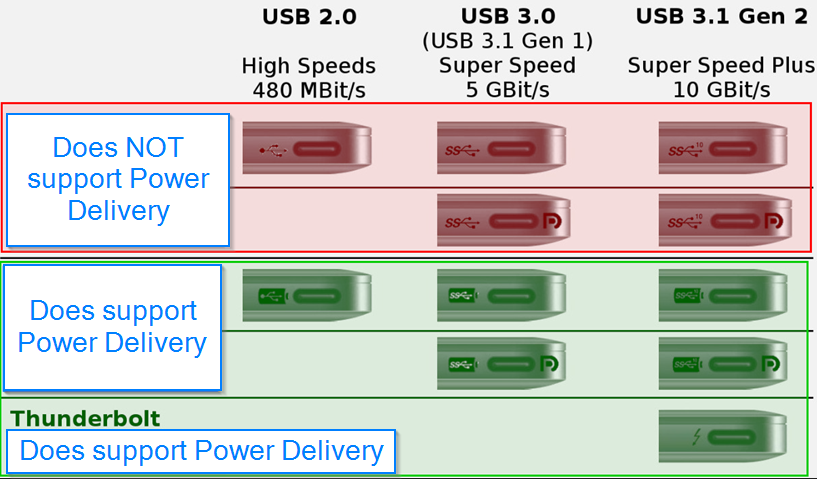SPRUJ09D March 2022 – September 2023 AM2631 , AM2631-Q1 , AM2632 , AM2632-Q1 , AM2634 , AM2634-Q1
- 1
- Abstract
- Trademarks
- 1Preface: Read This First
- 2Control Card Overview
- 3Board Setup
- 4Hardware Description
- 5References
- Revision History
- A E2 Design Changes
- B E1 HSEC Pinout Table
3.1 Power Requirements
The AM263x Control Card is powered from a 5 V, 3 A USB type-C input or from a 5 V, 3 A HSEC connection supplied by the docking station. The following sections describe the power distribution network topology that supply the AM263x Control Card, supporting components and the reference voltages.
Power supplies that are compatible with the AM263x Control Card:
- When using the USB type-C
input:
- 5 V, 3 A power adapter with USB-C receptacle
- 5 V, 3 A power adapter with captive USB-C cable
- PC USB type-C port that
has Power Delivery classification
- Thunderbolt
- Battery behind USB logo
 Figure 3-1 USB Type-C Power Delivery
Classification
Figure 3-1 USB Type-C Power Delivery
Classification- When using the HSEC DC barrel
jack power input:
- A power adapter that is at least 15 W
Power supplies that are NOT compatible with the AM263x Control Card:
- When using USB type-C input:
- Any USB adapter cables
such as:
- Type-A to type-C
- micro-B to type-C
- DC barrel jack to type-C
- 5 V, 1.5 A power adapter with USB-C captive cable or receptacle
- PC USB type-C port not capable of 3 A
- Any USB adapter cables
such as: